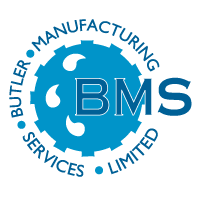Sewage Treatment Terminology Explained A-Z Part 1; Aerotor to Anoxic
Introduction
Welcome to the first installment of our A-Z guide to sewage treatment terminology. This series aims to demystify the technical jargon commonly used in the field of sewage/wastewater treatment, with a focus on package sewage treatment systems
In many specialist areas of professional, scientific and commercial life a certain 'jargon' builds up, often serving to mystify and confuse the outsider. Sewage Treatment is no exception and over the course of eight weekly articles we will attempt to define and explain the most commonly used terms in sewage/wastewater treatment especially those used in relation to package sewage treatment from ‘A-Z’.
1. Aerotor:
BMS Trademark for the aerobic section of the BMS Blivet system.
A next-generation Rotating Biological Contactor (RBC), combining:
Fixed film reaction.
Active aeration.
Features 97% surface area inside the rotor, enhancing efficiency.
2. Activated Sludge:
A microbial mass or flocculent produced by continuously aerating sewage.
Also refers to wastewater treatment systems that use suspended activated sludge, such as:
SBR (Sequence Batch Reactor).
MBBR (Moving Bed Biofilm Reactor).
3. Aerobic Action:
A biological process occurring in the presence of oxygen.
Fundamental to many sewage treatment processes, including BOD reduction and nitrification.
4. Aluminium Sulphate (Al₂SO₄):
A chemical used to reduce Phosphorus (P) levels in sewage treatment systems.
Typically dosed in the primary settlement area.
5. Ammonia (NH₃/NH₄):
A common form of Nitrogen found in sewage.
Readily usable by plants for growth, but high levels in receiving waters can lead to:
Algae blooms.
Oxygen depletion.
Fish kills.
6. Anaerobic Action:
A biological process occurring in the absence of oxygen.
Found in processes like sludge digestion.
7. Anoxic Action:
A process occurring without active aeration, but where some oxygen may still be present.
Commonly used in denitrification to convert Nitrates (NO₃) into Nitrogen gas (N₂).
Additional Resources
For more detailed explanations of sewage treatment parameters, visit the BMS Education Blog/Customer Questions section, which includes topics like:
Next Up
The next article will cover terms starting with 'B', including Balance Tank and BOD (Biochemical Oxygen Demand).
Questions?
If you have any questions of would like information on package wastewater treatment products, feel free to contact us.
About BMS
BMS is a quality manufacturer of package products for wastewater and stormwater treatment:
Established: 1986
Global Reach: Exported to over 50 countries.
Family Business: A third-generation company with deep expertise.
BMS Product Range
BMS provides a wide array of surface water and wastewater treatment products, including:
View the full product catalogue here
Additional Services by BMS
Free Design Service: For sewage treatment, pump stations, and surface water management.
Operation and Maintenance: Full services for existing installations, including repair, advice, and testing.
Free CPD Presentations: Available for sewage treatment and surface water management, delivered at your location.
We would be delighted to discuss any requirements you might have, and we are available to meet you at your convenience. Contact us today.
© Butler Manufacturing Services 2024.

